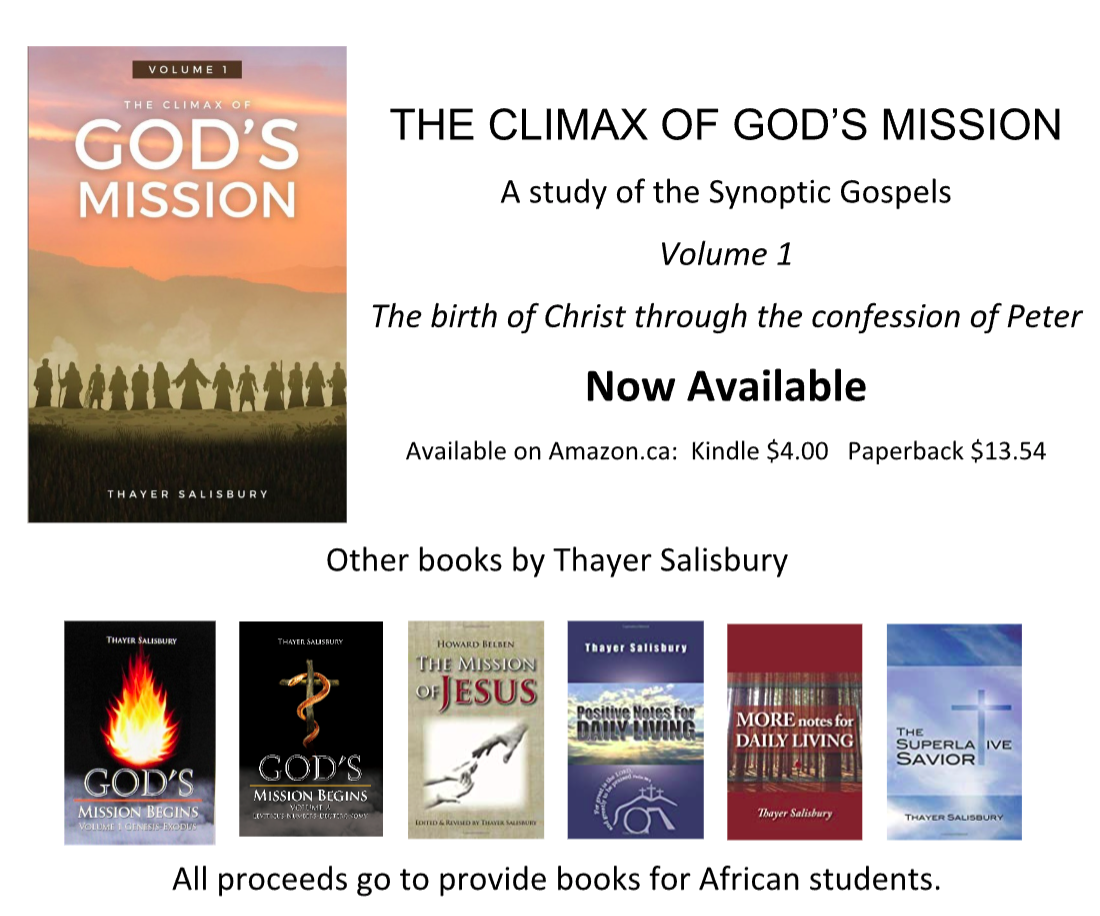Part 1 of Hebrews Use of the Old Testament
As we progress in our study of Scripture, there comes a time when we notice that the margins of our study Bible is filled with numbers and letters. At some point, it becomes clear that these are a mixture of cross references and textual notations. Cross references point to other places in the Bible where a similar word or idea occurs, while textual information adds insight into the state of preservation and variant reading associated with that passage. When added together, this information adds both depth and breadth to our understanding.
Many of the cross-references in the New Testament are drawn from passages in the Old Testament. Some are quotes or near-quotes while others paraphrase an idea or allude to a similar treatment of parallel subject matter. We will come back to this and discuss the New Testament’s use of the Old testament in general, giving particular attention to the book of Hebrews. In the process we hope to surface some helpful principles that will enrich our Bible study.




The Gospel of Matthew uses the Old Testament in a way that can be very hard to follow. 1 Matthew is filled with references to the Old Testament but his use of these references may be rather difficult for a modern reader to understand. If, however, Matthew is the most difficult to grasp, we might suggest that a reasonable case could be made that Hebrews could take the second-place ribbon for difficulty (Carson, 2019).
There are several things that the author of Hebrews does, which can make it difficult for a modern reader to understand what rules he is following, as he references the Old Testament. In this article we will discuss those uses and demonstrate that the author of Hebrews uses the Old Testament in an appropriate and convincing way. But he uses it, from a Christocentric, redemptive-history standpoint. His approach preserves the original context, but sees Jesus as the fulfillment of the expectations of the Old Testament writers. In other words the whole of the Old Testament is pointing ultimately to Jesus, and we should expect to find him there. (Heb 5:11-14).
Before we get to that point, we should establish some general principals related to the New Testaments use of the Old Testament. We should also examine some of the proposals put forward to make sense of the hermeneutical approach used by New Testament authors. We can begin simply by outlining the kind of references we find being made to the Old Testament.
As we read the New Testament, we should keep in mind that the original writers and their hearers were intimately familiar with the Old Testament. Deuteronomy 6:6 commanded the people to have the words of God at the forefront of their lives. There is every indication that this is exactly what they did, Learning the Old Testament from a very early age (Davis, 1991). We would expect then, to see references made to the Old Testament with great frequency and variability. This is in fact, exactly what we find.
New Testament authors will sometimes make direct quotations. Other times there will be just an allusion to a text or a theme. Archer and Chirichigno identify five categories. These categories range from a direct quote, free from any significant difference from the Masoretic text, to “passages that seem to take questionable liberty with the Old Testament original” (Gleason L. Archer, 1983) Richard B. Hays identifies three categories; “Quotations, Allusions and Echo’s.” (Carson, 2019.)
Common sense and knowledge of how we use quotations today can also shed light on this. Consider how a song lyric or movie quote may be used in any number of different ways and communicated in different forms, which will vary in accuracy and purpose. We should give some attention to these different kinds of quotations.
Sometimes a New Testament author will give a direct quotation from the Old Testament, in which a whole phrase is copied word for word or nearly word for word.
For example, Matthew 2:6 there is a straightforward quotation of Micah 5:2 in reference to the birthplace of the Messiah. Even in direct quotations some variation could be expected, for several reasons. The author could be quoting from memory, or he might be using the Septuagint (Greek translation of the O.T.). He migh also be using Hebrew text and translating it into Greek for his readers. Each of these might all account for some variation between a New Testament quotation and what we have in our Old Testaments. Consider Jesus’ words in Matthew 27:46, quoting from Psalm 22. Here we have Aramaic words transliterated in Greek and then translated into English. His message has passed through at least three languages, demonstrating the complexity that may be involved in a quotation.
On other occasions, the New Testament author may not offer a direct quotation but rather an allusion to an Old Testament text. Consider for example, Paul’s allusion to the events of the Exodus in I Corinthians 10:1-5. In this case, not a single word is quoted from Exodus but it is abundantly clear that Paul is referring to the events in Exodus 12 – Numbers 14. The prologue to John’s gospel (John 1:1-5) begins with an obvious allusion to Genesis 1:1. Much could be said of the powerful dual meanings that John employs, but the allusion is obvious. In these examples we do not have an exact quotation from the Old Testament but the references are obvious.
Sometimes the reference to the Old Testament is evident but less specific. Think of Peter’s words in I Peter 1:10
“Concerning this salvation, the prophets who prophesied about the grace that was to be yours searched and inquired carefully.”
Clearly, Peter has in mind, not a specific passage but the echo of expectation that rings down through the ages.
A similar use of scripture by Jesus is found in Matthew 23:34, when he says, “Therefore I send you prophets and wise men and scribes, some of whom you will kill and crucify, and some you will flog in your synagogues and persecute from town to town”. Again, no specific Old Testament passage is referenced but rather a theme. In fact, the whole of Matthew 23 is an echo of the woe’s pronounced by the prophets against all who stood in opposition to God and his work. We could possibly add to this category, passing references or uses of Old Testament phrases that come to the mind of an author. Matthew’s quotation of Hosea 11:1, could be an example of this, where Jesus’ life echo’s the experience of Israel.
We observe then that some of the New Testament authors use the Old Testament in various ways and for various purposes. And while not all of these are common for us today, some of them are. For example, I frequently hear preachers and teachers paraphrase a passage or allude to a Biblical account. We might also engage in partial quotations as part of our everyday conversational speech. Someone might say – “I wash my hands of this,” when fed up with a project, or “Let there be light,” when tripping a light switch. So while we make this kind of use of scripture to get a point across, it surprises us to find that the Biblical writers occasionally did the same thing. It has been said many times, but I will say it again – the Bible is written in language, and translated into language. And while scripture is of far more consequence than a news paper or magazine, similar rules of interpretation should be employed.
As you read your New Testament, take time and track down the references to the Old Testament. Some may be difficult to follow or explain but most often your Study will be deeply enriched. An excellent resource for this kind of study is Commentary on the New Testament use of the Old Testament Edited by D.A. Carson.
May God Bless Your Bible Study.
Works Cited
Carson, D. A. (2019, March). D.A. Carson Gheens Lectures Part 1. Retrieved from YouTube: https://www.youtube.com/watch?v=x1QlEVWUX58&t=2963s
Davis, T. C. (1991). Studylight.org. Retrieved from Holman Bible Dictionary, Education in Bible
Times: https://www.studylight.org/dictionaries/eng/hbd/e/education-in-bible-times.html
Gleason L. Archer, G. C. (1983). Old Testament Quotations in the New Testament . Eugine OR: Eipf and Stock Publishers.
1. For the purposes of this paper I will use the term Old Testament because it’s the common way we refer to the Hebrew Bible. It’s important to add at this point, that for Matthew and other New Testament writers it was just scripture, or to use our terminology, the Bible. There was no New Testament as we understand it. It was being written at the time. This is not to say that New Testament writers didn’t see their work and the work of their contemporaries as Scripture. Consider that Paul sites Deuteronomy along side Luke calling both scripture (I Tim 5:18 quoting Duet 25:4 and Luke 10:7). It is to say, when New Testament authors were going to cite scripture to support a particular point, they would be citing the Old Testament.)
